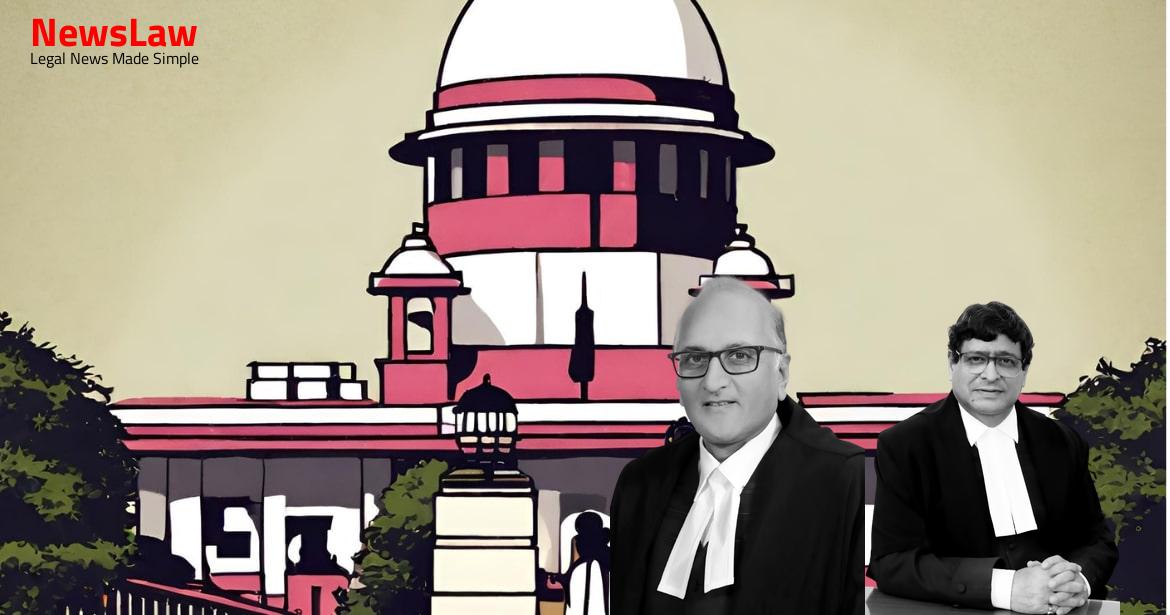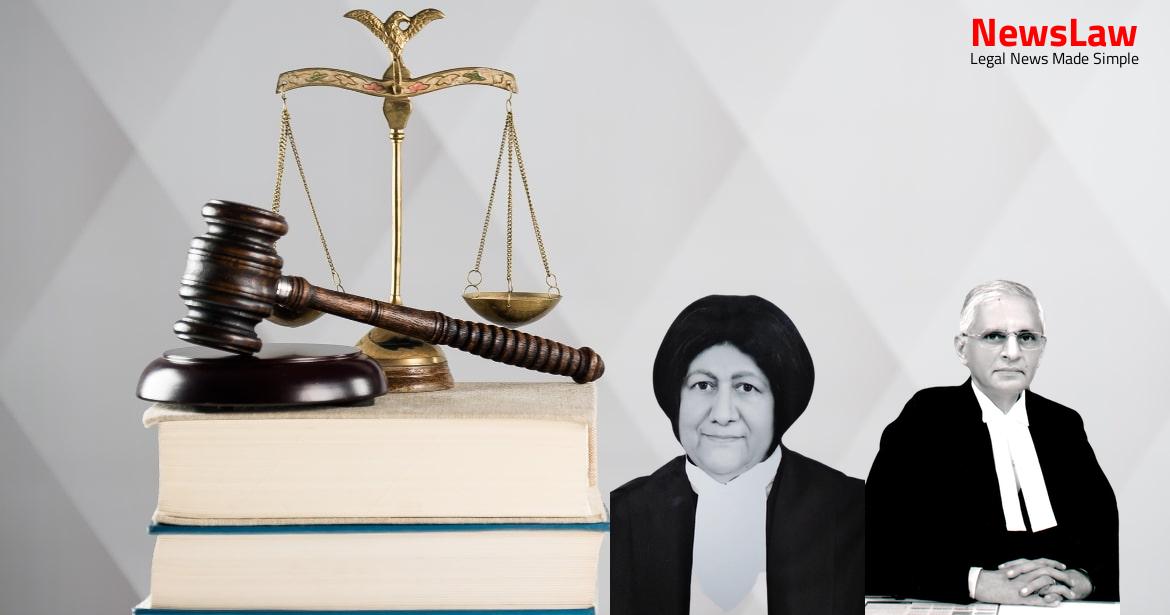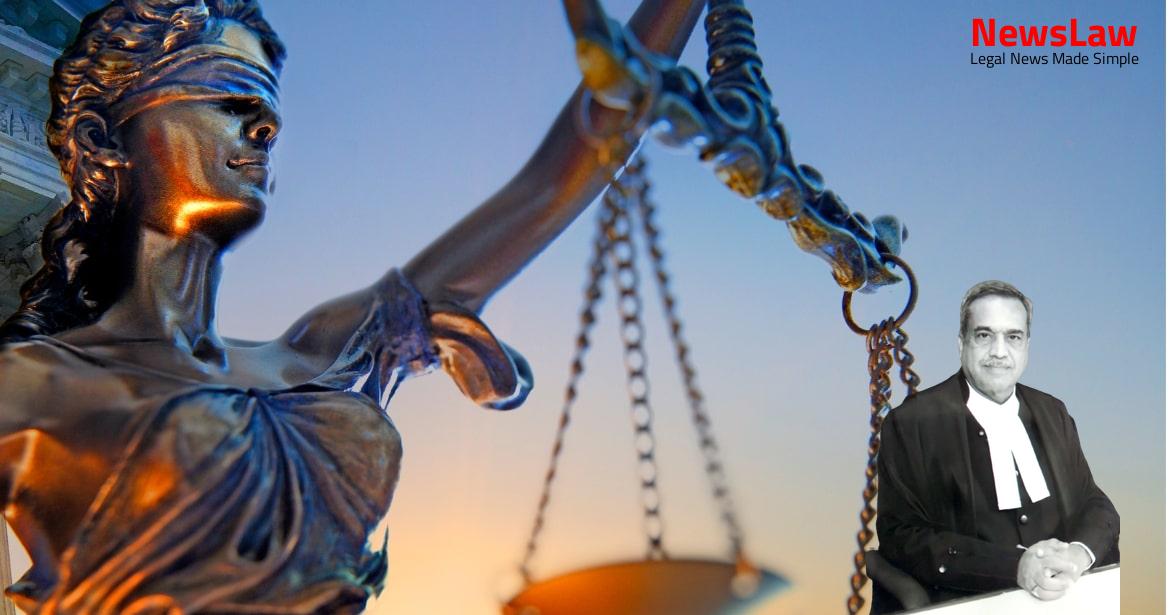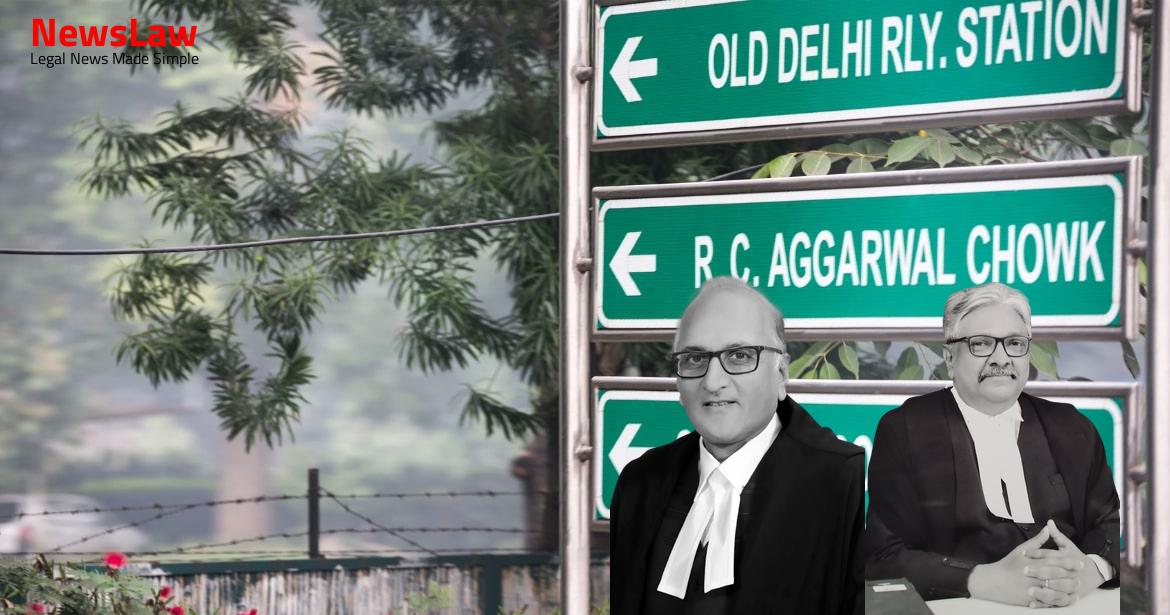Explore the detailed legal analysis undertaken by the court in a recent property dispute case, focusing on the application of Section 41 of the Punjab Courts Act, 1918. The case involves complex issues surrounding tenancy, subletting, and counter-claims, shedding light on the importance of understanding and applying relevant legal provisions in resolving disputes over property rights.
Facts
- The defendants filed a counter claim regarding additional Killa numbers 6//18 and 23, in addition to the plots mentioned by the plaintiffs.
- They claimed that their father, Ganpat Rai, was a tenant under Indraj and later under Ms. Ram Kaur, and that they continued to be in possession of the suit property.
- Defendants denied ever being tenants of the plaintiffs and asserted their rights over the mentioned Killa numbers.
- The counter claim regarding Killa numbers 6//18 and 23 was decreed in favor of the defendants as a consequence of the suit being dismissed.
- The High Court held that counter claims on plot Nos. 6//18 and 23 could not be decreed as the plaintiffs had not claimed these plots.
- After Ganpat Rai’s death, the tenancy was inherited by his three sons, Sombir, Ishwar, and Om Prakash.
- The counter claim by Defendant No. 2 was decreed.
- The first appeal by the plaintiffs was dismissed by the Appellate Court.
- The High Court upheld findings on sub-letting and tenancy in favor of the defendants.
- The High Court allowed the plaintiffs’ claim on plots 21//3/2 and 7//13 due to uncontested nature of the claim by the defendants.
- The Trial Court dismissed the suit as the plaintiffs failed to prove their rights on the property or the alleged sub-tenancy.
- The Appellate Court emphasized the burden on the appellants to prove the end of Ganpat Rai’s tenancy in 1976, which was not established by the plaintiffs.
Also Read: Balancing Power and Transparency: Electoral Bonds Struck Down, Disclosure Mandated
Arguments
- The learned counsel argues that a second appeal can only be heard on a substantial question of law.
- No substantial question of law was formulated or argued before the Second Appellate Court (High Court) as required by Section 100 of the CPC.
- The appellant’s counsel asserts that the High Court’s order should be set aside due to this procedural defect.
- The governing provision for the present dispute is Section 41 of the Punjab Courts Act, 1918, rather than Section 100 of the CPC.
- The first ground raised by the appellant’s counsel is the failure of the High Court to formulate any substantial question of law while deciding the second appeal.
Also Read: Recall of Resolution Plan Approval: Legal Analysis
Analysis
- After the 1976 Amendment Act, Section 41 of the Punjab Courts Act was held to be repealed in the case of Pankajakshi & Ors. v. Chandrika & Ors.
- This ruling was later followed in the case of Kirodi v. Ram Parkash & Ors.
- However, a Constitution Bench in Kirodi v. Ram Parkash & Ors. stated that the reasoning provided in Kulwant Kaur for the repeal of Section 41 of the Punjab Courts Act was incorrect.
- The Trial Court and First Appellate Court did not find sufficient evidence to support the plaintiffs’ claim over the property.
- Section 41 of the Punjab Courts Act remains in force and is applicable in the State of Haryana.
- The laws applicable in the former State of Punjab were carried over to the new State of Haryana under the Punjab Reorganization Act, 1966.
- The High Court’s decree in favor of the plaintiffs on certain plots was set aside due to lack of evidence.
- The Second Appellate Court’s reasoning for decreeing the plaintiffs’ claim was found to be incorrect.
- A counter claim by the defendant on certain plots was rejected as it did not align with CPC rules, and was not against the plaintiffs’ claim.
- The defendants’ counter claim on other plots was allowed despite no claim by the plaintiffs on those plots, which was deemed erroneous.
- Formulating a substantial question of law in second appeal was not necessary in the State of Haryana, following Section 41 of the Punjab Courts Act.
- The plaintiffs failed to prove their ownership of the disputed land.
- Article 254 of the Constitution of India was found not applicable in this case.
- Laws in force before the Constitution of India continue until altered by a competent authority.
- Defendants argued that the property should be reverted back to the plaintiffs due to subletting by the tenant.
- Defendants’ counter claim on plots not claimed by the plaintiffs was barred under CPC rules.
- Provisions of the Punjab Courts Act, 1918 are still relevant in the current territory of Haryana.
- Order VIII, Rule 6A of the CPC allows a defendant to set up a counter-claim against the plaintiff’s claim before the defendant delivers their defense.
- The counter-claim can be for any right or claim in respect of a cause of action accruing to the defendant against the plaintiff.
- The counter-claim cannot exceed the pecuniary limits of the court’s jurisdiction and has the same effect as a cross-suit.
- Section 100 of the CPC, after the 1976 Amendment, is applicable in Punjab & Haryana for second appeals, which must be decided on a substantial question of law.
- The section of the Act is similar to the unamended Section 100 of the CPC and repeals any inconsistent provisions inserted by State Legislatures or High Courts.
- The Amendment Act of 1976 inserted the present Section 100 of the CPC, with Section 97 of the Amendment Act providing for repeal and savings.
Case Title: SATYENDER Vs. SAROJ (2022 INSC 839)
Case Number: C.A. No.-004833-004833 / 2022



